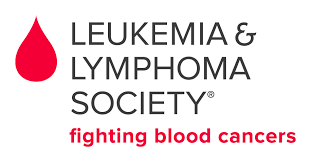Your treatment plan is determined by your CML phase. Treatment options include chronic phase CML treatment, accelerated and blast crisis phase CML treatment, stem cell transplantation and clinical trials.
The initial goal in treating people with chronic phase CML is to restore blood counts to normal levels. This is followed by a more profound reduction or elimination of CML cells altogether, while keeping an acceptable quality of life. Several studies are evaluating the ability of patients with a stable complete molecular response to interrupt TKI therapy and experience a treatment-free remission.
Treatment usually returns the blood cell counts to normal values within one month and maintains them either at or close to normal levels (slightly lower levels in blood cell counts are not uncommon). During treatment, patients should see a rapid reduction in the size of the spleen until it approaches normal size. Treatment also helps prevent infections and abnormal bleeding and allows patients to resume their previous levels of day-to-day activities.
Patients will need to receive periodic health checks, including blood cell counts and other tests to determine the extent and stability of cytogenetic and molecular remission. Periodic bone marrow examinations may be necessary early in treatment but can often be done less frequently over time; periodic blood-based monitoring of treatment response by PCR continues indefinitely. Individuals also need to have their tolerance to drugs assessed from time to time and may need dosage adjustments.
The goal in treating accelerated phase chronic myeloid leukemia and blast crisis CML is to eliminate all cells that have the BCR-ABL oncogene and achieve remission. BCR-ABL oncogene is a mutated gene that tells your cancer cells to make a specific type of protein that leads to CML. If all the oncogenes cannot be destroyed, then the goal is to return the CML to its chronic phase.
Treatment for these types of CML usually consists of specific drugs such as the BCR-ABL tyrosine kinase inhibitor (TKI). Other drugs may also be combined with a TKI for better results.
Patients with dangerously high white blood cell counts can have some of their white cells removed during a process called leukapheresis. During this process, a machine similar to a dialysis machine removes white cells from your blood. Leukapheresis can be a good choice for women diagnosed with CML in the first months of pregnancy, when drug therapy may be harmful to their unborn baby. After your white cell count is more normal, oral therapy may begin.
Stem cell transplantation is still a treatment option for some patients who are first diagnosed in, or progress to, advanced phases of CML. These patients are counseled by their doctors to weigh the benefits and risks of having an allogeneic stem cell transplant.
Finding the best treatment approach
The treatment your doctor recommends is based on your CML phase and diagnostic test results. As you develop your treatment plan with your doctor, be sure to discuss what results to expect, the possibility of participating in a clinical trial and potential long-term and late side effects.
You may find it helpful to bring a loved one with you to your doctor visits for support and to take notes and ask follow-up questions. It's a good idea to prepare questions you'd like to ask before you visit your doctor.
To learn more, visit The Leukemia and Lymphoma Society.
 Content provided by:
Content provided by: